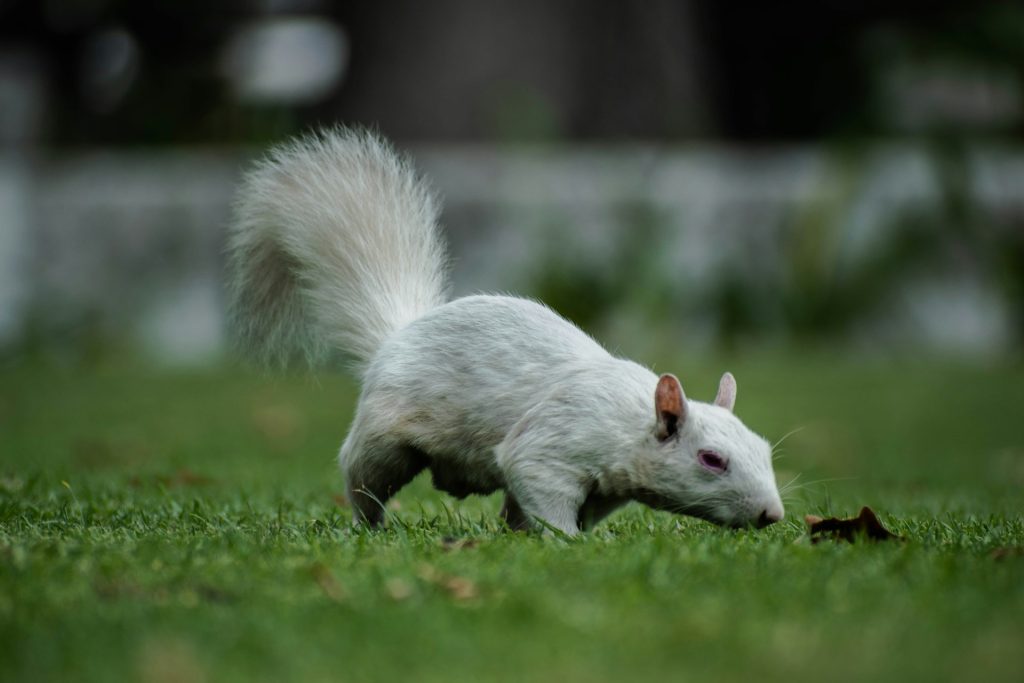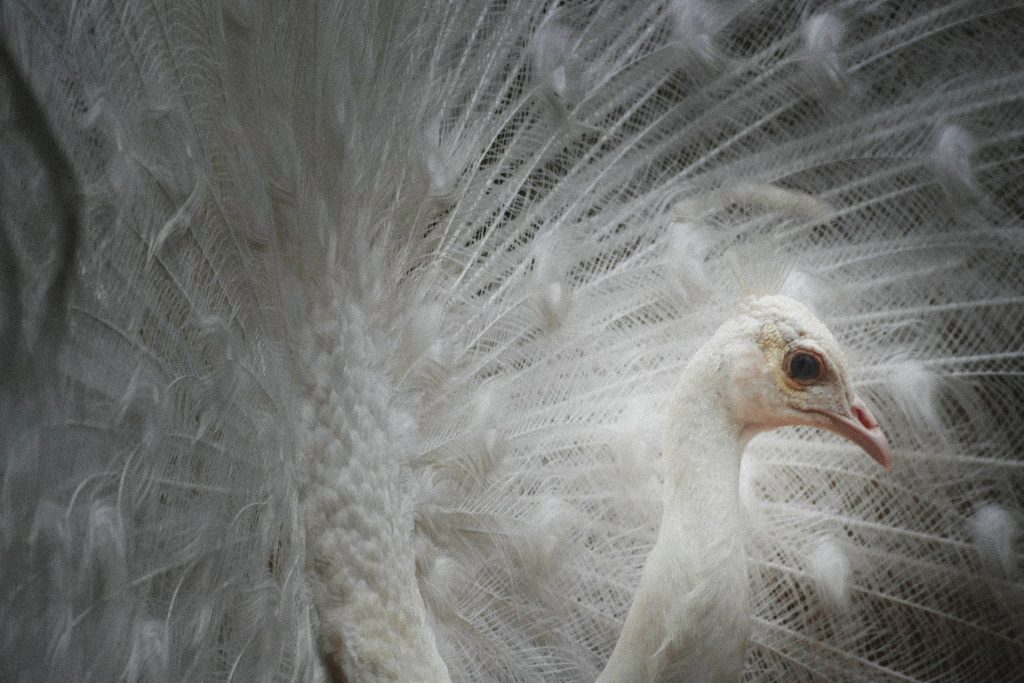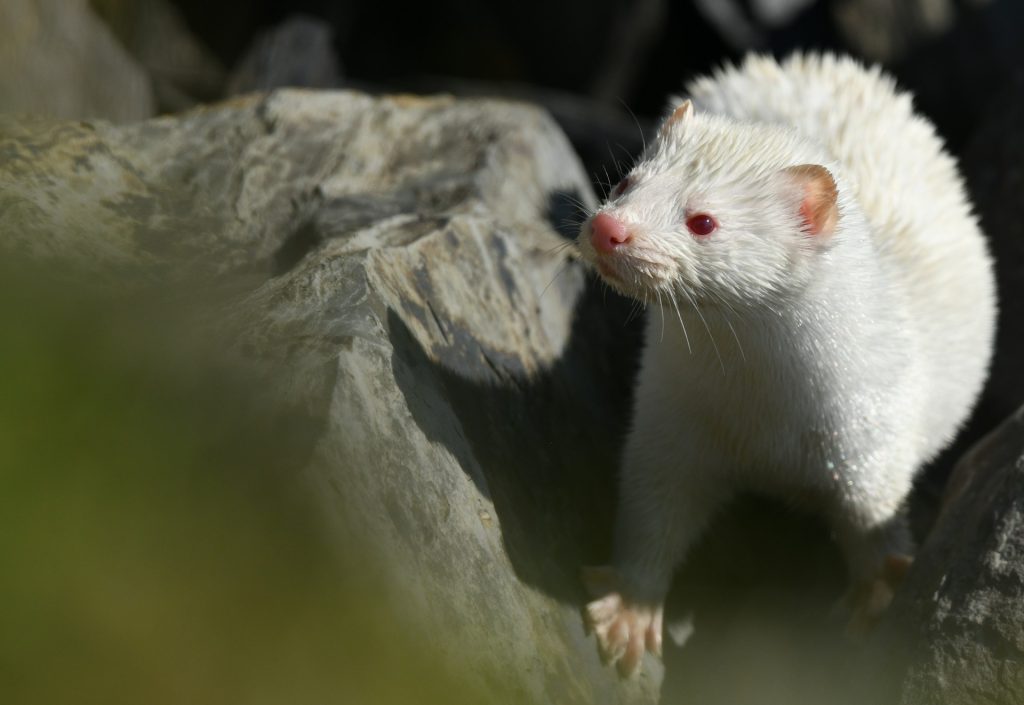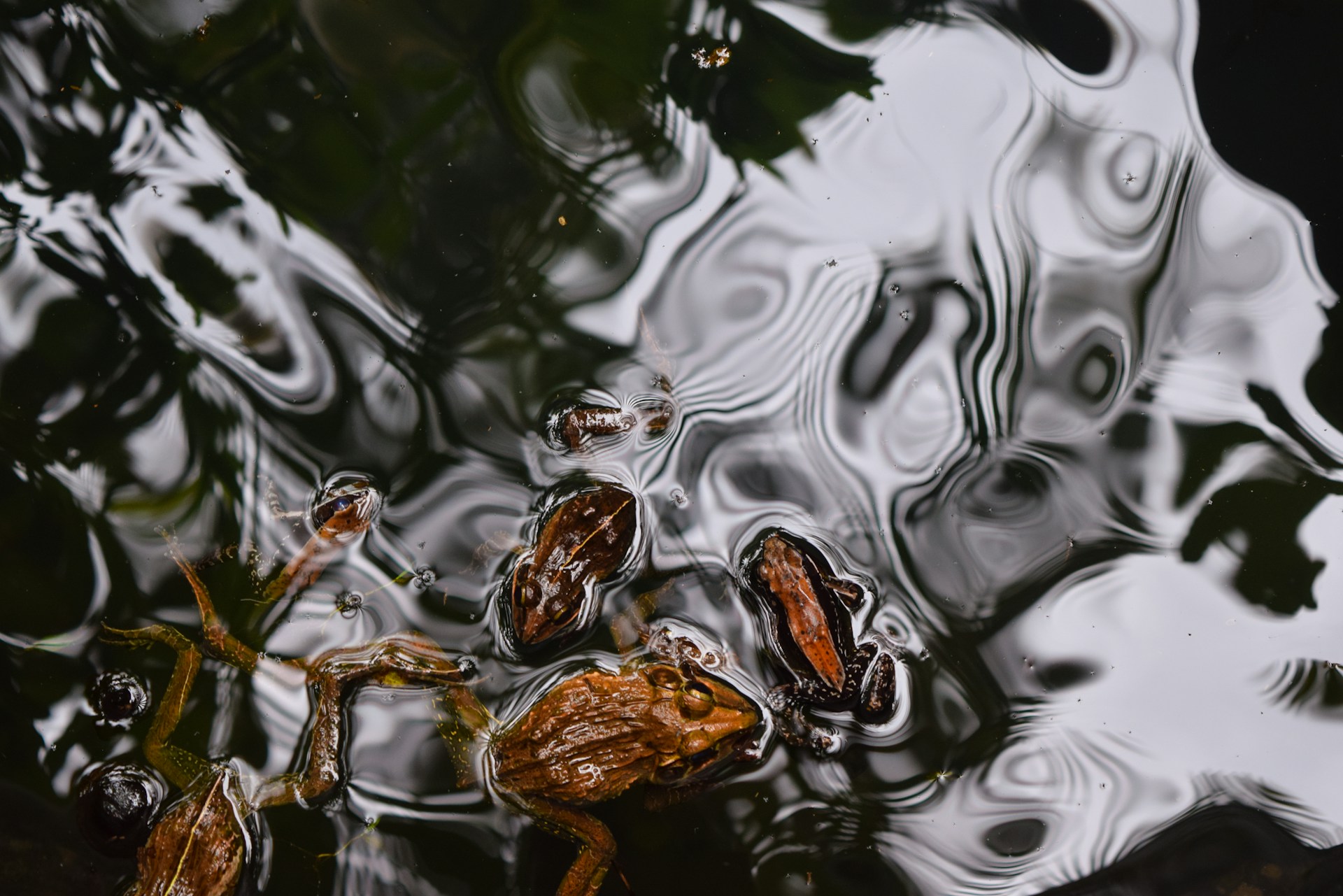If you’ve ever spotted an abnormally white critter or taken notice of its pink eyes, you may have seen an albino animal! From snails and fish to robins and deer, albinism has been observed in a wide range of animals. But what exactly causes this rare condition? Let’s dive into the science and explore the interesting world of albinism in animals.

The Root of Albinism
Albinism results from cells that can’t produce melanin, the pigment needed to color skin, scales, eyes, and hair. This genetic condition is passed to offspring when both parents carry the recessive gene. When albinism is present, the animal can appear white or pink due to the absence of melanin.
Melanin is crucial for determining the coloration of an animal. Without it, the natural hues of an animal’s skin, fur, or scales are missing, leaving them with a striking white or pale appearance. The pink coloration, often seen in the eyes, nails, and skin, comes from blood vessels showing through the unpigmented tissues.
All or Nothing – Or Something In Between
Albinism isn’t always an all-or-nothing condition. Animals can be completely albino (pure albino) or have leucism. Pure albino animals will have pink eyes, nails, skin, and/or scales. In contrast, animals with leucism may have mostly typical but lighter coloration patterns. Leucism results in partial loss of pigmentation, allowing for some color to be present but often in a diluted or patchy form.
For instance, a pure albino deer will be entirely white with pink eyes, while a leucistic deer might have a mix of white and normal coloration, possibly with blue or dark eyes instead of pink. This distinction is crucial for understanding the variations in pigmentation issues across different species.
Challenges Faced by Albino Animals
Aside from their striking appearance, albino animals often face several challenges related to their condition. One of the most significant issues is with their eyesight. Melanin plays a vital role in eye development, so without it, the irises, retinas, eye muscles, and optic nerves may not form properly. This can cause problems with focusing, depth perception, and tracking, making survival more difficult for albino animals.
Furthermore, melanin helps protect the skin from sunlight. Lacking this pigment means a higher risk of developing melanoma, a type of skin cancer. This risk poses a significant threat to sun-basking species, often leading to premature death for the albino animal.
Birds with albinism have an especially hard time finding a mate. While many species attract potential partners with bright colors, a white bird is more likely to get rejected. This can lead to difficulties in reproduction and perpetuation of the albino gene.

The Flip Side: Melanism – Nature’s Dark Counterpart
While a bright white animal may make you stop and stare, what about an all-black variation? This coloration, called melanism, is due to an increase in melanin in the animal’s skin and fur. Like albinism, melanism is a hereditary condition and has been found in various species, including reptiles, amphibians, and mammals.
Melanistic animals often have a dark, almost black appearance, which can be advantageous in certain environments. For instance, black panthers (melanistic leopards or jaguars) blend seamlessly into the dense jungle shadows, making them stealthy predators.
The Disadvantage of Being Noticeable
A bright white animal in a green and brown environment can really stand out, making it an easy target for predators. This is because albinism disrupts cryptic coloration, the natural coloring or markings animals have to blend into their surroundings. Baby deer, for example, have white spots that help them blend in with the dappled sunlight on the forest floor. However, an albino deer lacks this camouflage, making it more vulnerable to predation.
Interestingly, there have been instances where albino animals are not recognized as prey due to their unusual coloring. Predators accustomed to typical coloration patterns might overlook an albino animal, mistaking it for something non-edible. This rare occurrence provides a slight survival advantage, albeit not a reliable one.
Mutant Colors: The Case of Blue Frogs
Some amphibians face a different color battle. There have been instances of frogs appearing blue due to genetic mutations. These mutations disrupt the normal pigmentation process, causing the frog to filter out different wavelengths of light, resulting in a blue appearance instead of the typical green or brown. This phenomenon highlights the complex interplay of genetics and pigmentation in the animal kingdom.

Albinism is a fascinating genetic condition that creates strikingly beautiful yet vulnerable creatures. From their distinctive white and pink appearance to the challenges they face in the wild, albino animals captivate our imagination and deepen our understanding of genetics and survival. While their unique look makes them stand out, it also serves as a reminder of the intricate and delicate balance of nature’s diversity.
So, the next time you spot a white squirrel or a pink-eyed rabbit, take a moment to appreciate the marvel of albinism. These animals are not just rare; they are a testament to the wonders and complexities of the natural world.





